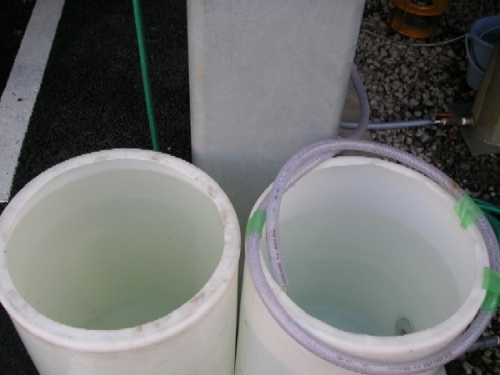Tech & Tools
Technical information
- HOME
- Tech & Tools
- Decolorization process
Decolorization process
There are many cases where the groundwater pumped up in various parts of Japan contains chromaticity components.
Colored water can be visually unpleasant, but when used in a manufacturing plant, the chromaticity should be removed as much as possible because the product will be colored and impurities will be mixed in.
In the case of tap water, the definition of chromaticity is the degree of yellow to tan exhibited by soluble and colloidal substances contained in water, and the tap water quality standard stipulates that the degree should be 5 degrees or less. I will.
The figure below is a photograph comparing groundwater with a chromaticity of 6 degrees and tap water with a chromaticity of 2 degrees. It only exceeded the tap water quality standard of 5 degrees once, but you can see that it looks very yellow.

There are several causes of chromaticity, and the typical ones are as follows.
● Inorganic chromaticity: Oxides of heavy metals such as iron and manganese
● Organic chromaticity: Humic acids, fluboic acids, himatomelamic acid, and other organic compounds
● Animals and plants: Algae, bacteria, etc.
The following are typical methods for processing chromaticity, but the cause of chromaticity should be investigated in advance and the appropriate method should be selected.
● Coagulation precipitation using coagulant, separation by coagulation filtration
● Adsorption using activated carbon
● Oxidative decolorization using sodium hypochlorite, ozone, AOP, etc.
We propose a lot of adsorption by radical light series and activated carbon, and have you deliver equipment and filter media.
Head Office
1-12-11 Tagawakita, Yodogawa-ku,Osaka
532-0021
Overseas Business Department
TEL +81-6-6301-6460
FAX +81-6-6308-3022




